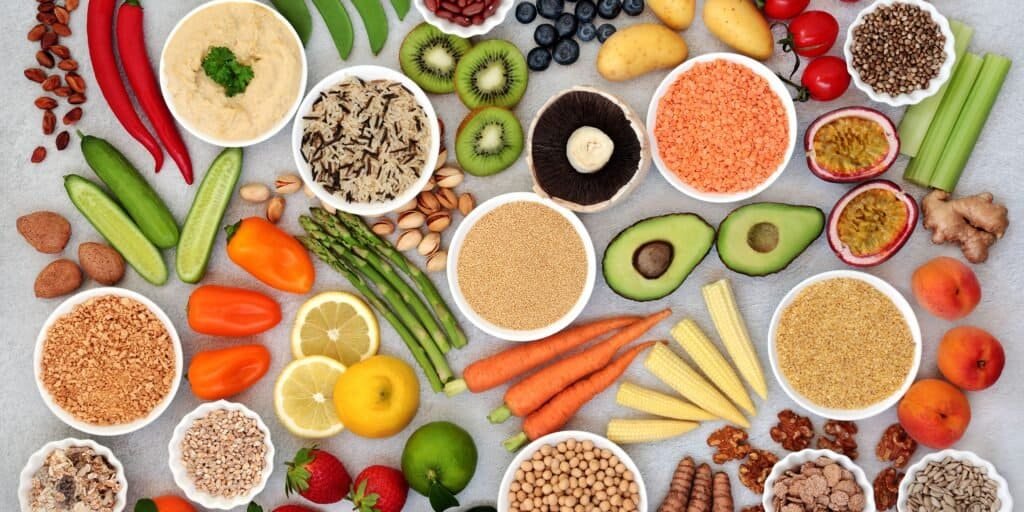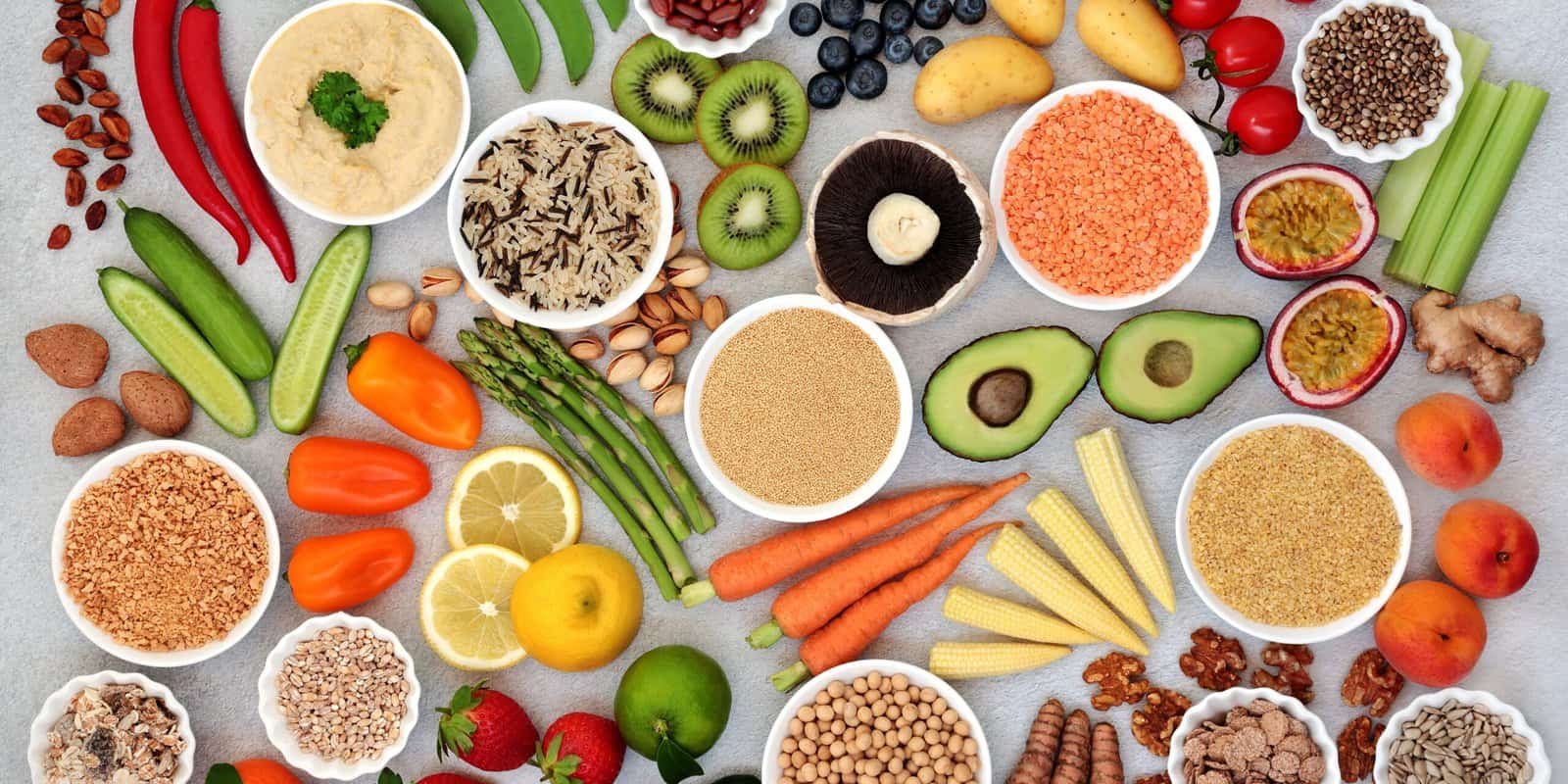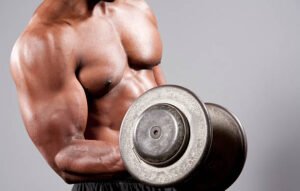Calisthenics, a dynamic and empowering form of exercise, goes beyond the mere execution of physical movements. It harnesses the body’s weight as resistance, requiring strength, flexibility, and control. In this comprehensive guide, we embark on a journey to unravel the profound connection between calisthenics and nutrition. Beyond the physical prowess demanded by calisthenics lies a critical component—diet.
The calisthenics diet is not just a set of nutritional guidelines; it is a strategically pivotal approach to fuel your body for peak performance. This guide aims to demystify the intricacies of calisthenics nutrition. It also offers valuable insights into the specific dietary requirements that complement this unique form of training. As we explore the secrets of the calisthenics diet, you’ll discover the significance nutrition plays in enhancing strength, endurance, and overall fitness levels.
Our exploration goes beyond generic advice, providing actionable insights and practical tips tailored for calisthenics enthusiasts. Whether you’re a beginner or a seasoned practitioner, understanding the nuances of the calisthenics diet is key to unlocking your full potential. Join us on this enlightening journey as we decode the symbiotic relationship between calisthenics and nutrition, paving the way for a transformative experience that transcends physical boundaries.
Diet and Nutrition
In the relentless pursuit of mastering calisthenics, the significance of a well-crafted nutrition plan cannot be overstated. A tailored diet is not merely a complement to your training; it is an integral component that can unlock your full potential in the world of bodyweight exercises. Let’s delve into the symbiotic union between your diet and calisthenics achievement, shedding light on the pivotal role played by both macronutrients and micronutrients.
1. Symbiosis of Diet and Calisthenics Success
Calisthenics places huge demands on the body, which requires a strategic approach to nutrition. A symbiotic connection exists between your diet and calisthenics achievements. Understanding this relationship is significant for optimizing performance and achieving your fitness goals.
2. Tailored Nutrition for Optimal Performance
A one-size-fits-all approach doesn’t suffice in calisthenics nutrition. Explore the necessity of tailoring your dietary choices to match the specific requirements of your training regimen. Discover how personalized nutrition plans can enhance energy levels, promote muscle growth, and aid in recovery.
3. Macronutrients: The Fuel for Calisthenics
Uncover the role of macronutrients—proteins, fats, and carbohydrates—as the primary sources of energy for calisthenics enthusiasts. Explore how a balanced intake of these macronutrients fuels your workouts, supports muscle development, and sustains overall endurance.
4. Micronutrients: The Unsung Heroes
While macronutrients take the spotlight, micronutrients play a crucial but often overlooked role. Delve into the importance of vitamins and minerals in calisthenics nutrition, understanding how these micronutrients contribute to overall well-being, immune function, and optimized training outcomes.
5. Strategic Meal Planning for Calisthenics
Learn the art of strategic meal planning tailored for calisthenics practitioners. Explore pre-workout and post-workout nutrition strategies, ensuring that your body receives the right nutrients at the right times to maximize performance and recovery.
Building the Foundation: Caloric Requirements
In the realm of calisthenics, the importance of caloric intake stands as the bedrock for achieving effective training outcomes. To embark on this journey, understanding the nuanced art of calculating personalized caloric needs is paramount. Let’s delve into the intricacies of this essential foundation, considering various factors that play an essential role in determining your optimal caloric requirements.
1. Caloric Intake as the Cornerstone
Caloric intake serves as the cornerstone upon which successful calisthenics training is built. It is the fuel that powers your workouts, aids in muscle recovery, and sustains overall performance. Exploring the right balance ensures that your body receives the energy it demands to excel in bodyweight exercises.
2. The Art of Personalized Calculation
Uncover the art of personalized caloric calculation, tailored to individual needs. Delve into methods such as the Harris-Benedict Equation or the Mifflin-St Jeor Equation, understanding how these tools help determine the baseline caloric requirements for optimal functioning.
3. Consideration of Activity Level
Recognize the dynamic nature of caloric needs based on your activity level. Whether you engage in intense calisthenics sessions or have a more moderate workout routine, adjusting caloric intake accordingly ensures that your body has the energy storage necessary for continued effort.
4. Aligning with Fitness Goals
Caloric requirements are not one-size-fits-all; they align closely with your fitness goals. Whether the aim is weight loss, muscle gain, or maintenance, tailoring your caloric intake to support these goals becomes a key aspect of building a successful foundation in calisthenics training.
5. Adaptability and Continuous Monitoring
Recognize that caloric requirements are fluid and can change over time. Regularly assess and adapt your caloric intake based on changes in activity levels, workout intensity, and evolving fitness goals. Continuous monitoring ensures that your nutrition plan remains in sync with your calisthenics journey.
Crafting the Calisthenics Diet

Embarking on a calisthenics journey demands a well-planned diet that optimally supports muscle growth, sustained energy, and overall performance. Here, we delve into the specifics of the ideal diet, focusing on key elements such as high-protein foods, strategic carbohydrate and fat consumption, and providing a glimpse into sample meal plans.
1. Emphasizing High-Protein Foods for Muscle Growth
Protein is the building block for muscle repair and growth. Incorporate lean protein sources such as chicken, turkey, fish, eggs, dairy products, legumes, tofu, and tempeh into your diet. These choices provide essential amino acids crucial for calisthenics enthusiasts looking to enhance muscle strength and development.
2. Strategic Carbohydrate Consumption for Sustained Energy
Carbohydrates are the body’s main energy source. Opt for complex carbohydrates found in whole grains, fruits, and vegetables. These choices release energy gradually, providing a sustained fuel source for extended calisthenics workouts. Balancing carbohydrate intake ensures optimal energy levels without causing spikes or crashes.
3. Balancing Healthy Fats for Energy Reserves
Incorporate healthy fats into your calisthenics diet to support energy reserves. Include sources like avocados, nuts, seeds, and olive oil. These fats provide a concentrated source of energy and contribute to overall well-being. Striking a balance between healthy fats, proteins, and carbohydrates ensures a comprehensive nutritional needs.
4. Sample Meal Plans for Inspiration
To make the calisthenics diet more tangible, consider sample meal plans that align with your training goals. For example:
-
- Breakfast: Scrambled eggs with spinach and whole-grain toast.
-
- Lunch: Grilled chicken or tofu salad with a variety of colorful vegetables.
-
- Snack: Greek yogurt with berries and a handful of almonds.
-
- Dinner: Baked salmon or a plant-based protein with quinoa and roasted vegetables.
Crafting your meals with a combination of these elements ensures a balanced calisthenics diet designed for your specific needs.
Hydration for Optimal Performance
In calisthenics, the importance of hydration is often ignored, yet it plays a crucial role in achieving peak performance. Understanding the importance of staying hydrated during workouts is crucial for maximizing the benefits of calisthenics training. Here’s an exploration of why hydration is significant and practical tips for tailoring it to individual needs.
Hydration is essential for several reasons:
-
- Temperature Regulation: During calisthenics workouts, the body temperature rises, leading to increased sweating. Adequate hydration helps in temperature regulation and prevents overheating.
-
- Performance Optimization: Dehydration can impair physical and cognitive performance. Maintaining proper fluid balance ensures optimal strength, endurance, and focus during calisthenics exercises.
-
- Recovery Support: Hydration is essential to the recovery process, facilitating nutrient transport to muscles and reducing the risk of cramps and muscle soreness post-workout.
Practical Tips for Hydration:
Tailoring hydration to individual needs involves considering factors like body weight, activity level, and environmental conditions. Here are practical tips:
-
- Pre-hydration: Begin your workout well-hydrated by consuming fluids throughout the day. Target at least a minimum of 2 liters of water daily.
-
- During Exercise: Sip water regularly during calisthenics sessions. For longer workouts or intense heat, consider sports drinks containing electrolytes to replenish lost minerals.
-
- Post-Workout Hydration: Rehydrate promptly after exercising to support recovery. Monitor urine color; pale yellow indicates adequate hydration.
Individualized Approach:
Recognizing that hydration needs vary among individuals, there’s no one-size-fits-all approach. Factors such as body weight, fitness level, and climate influence fluid requirements. Personalizing hydration strategies ensures optimal performance and well-being.
Supplements and Their Role in Calisthenics Diet.

Calisthenics enthusiasts can enhance their training with strategic supplement use. Here’s a guide to navigating the world of supplements, including when and how to incorporate them into your diet, along with potential benefits and risks.
Protein Supplements:
-
- Benefits: Aid muscle recovery and growth, especially post-workout.
-
- Risks: Excessive intake may lead to digestive issues; choose quality sources.
Pre-Workout Supplements:
-
- Benefits: Improve exercise performance with ingredients like beta-alanine and citrulline malate.
-
- Risks: Potential side effects such as increased heart rate or jitters.
Creatine:
-
- Benefits: Boosts strength, reduces fat mass, increases muscle mass, and aids recovery.
-
- Risks: Safe for most, but consult a healthcare professional if unsure.
Navigating Timing:
When to Take: Consider pre-workout, post-workout, or distributed throughout the day based on personal preferences and goals.
Potential Risks and Considerations:
Individual Responses: Responses to supplements vary; monitor how your body reacts.
Dosage Control: Follow recommended doses to avoid overconsumption.
Incorporating supplements into your calisthenics journey requires a personalized approach. Consult with a healthcare or nutrition professional for tailored advice, ensuring that supplements align with your fitness goals and overall well-being.
Overcoming Common Challenges in Calisthenics Diet and Nutrition
Maintaining a calisthenics-friendly diet presents various challenges that enthusiasts commonly encounter. To ensure sustained success in both fitness and nutrition, it’s crucial to address these hurdles and implement effective strategies. Here, we delve into common challenges and provide insights into overcoming them while adapting the diet to diverse calisthenics goals.
Common Challenges:
1. Inconsistent Nutritional Discipline:
Insight: Establish a consistent eating schedule to promote discipline.
Strategy: Plan meals in advance, ensuring a balance of macronutrients to fuel workouts effectively.
2. Meeting Specific Calisthenics Goals:
Insight: Different goals require tailored nutrition plans.
Strategy: Adjust macronutrient ratios based on whether the aim is muscle gain, fat loss, or overall performance enhancement.
3. Budget Constraints:
Insight: Nutrient-dense foods can strain the budget.
Strategy: Prioritize cost-effective protein sources like beans, lentils, and affordable whole grains.
4. Limited Cooking Skills or Time:
Insight: Busy schedules may hinder cooking efforts.
Strategy: Opt for simple, quick recipes and consider batch cooking to save time during the week.
5. Social and Peer Influences:
Insight: External factors may impact dietary choices.
Strategy: Communicate your nutritional goals with friends and family, seeking their support rather than succumbing to peer pressure.
Strategies for Success:
-
- Education and Planning: Gain knowledge about nutritional needs in calisthenics. Plan meals in advance to ensure adherence to dietary goals.
-
- Flexibility and Adaptability: Understand that dietary needs evolve with changing fitness goals.
Adjust the diet as needed, accommodating variations in workout intensity and duration.
-
- Mindful Eating: Practice mindful eating to enhance awareness of portion sizes and satiety cues.
Focus on nutrient-dense foods to optimize caloric intake.
Community Support:
-
- Connect with the calisthenics community for shared experiences and insights.
-
- Seek guidance from nutritionists or trainers for personalized advice.
By recognizing these challenges and implementing targeted strategies, individuals can navigate the complexities of calisthenics nutrition, ensuring both adherence to dietary goals and alignment with the dynamic nature of their fitness pursuits.
Key Takeaways: Unveiling the Secrets of a Well-Balanced Diet
In the pursuit of optimal performance in calisthenics, a well-balanced diet emerges as a crucial pillar. The article illuminates key takeaways, emphasizing the importance of nutrient-rich choices to energize the body optimally .
1. The Power of Balance:
A well-balanced calisthenics diet harmonizes macronutrients, with a focus on proteins, complex carbohydrates, and healthy fats. This equilibrium supports overall energy needs and muscle function, vital for peak performance in calisthenics routines.
2. Tailoring Macronutrient Needs:
Determining individual macronutrient requirements is essential. The article suggests a personalized approach to meet specific needs, considering factors like body weight, activity level, and fitness goals.
3. Minimalistic Principles:
The concept of minimalistic eating is highlighted, encouraging the consumption of whole foods with minimal ingredients. This aligns with the philosophy of simplicity and nutritional density, a cornerstone for a calisthenics-friendly diet.
4. Environmental Impact on Diet:
The environment plays a pivotal role in shaping dietary habits. The article underscores the importance of creating a supportive diet environment, recognizing it as a key factor influencing dietary choices and adherence.
5. Energy Balance is Key:
The article emphasizes the significance of maintaining a healthy energy balance. It challenges the notion that willpower alone drives dietary success, advocating for a more holistic understanding of the impact of one’s diet environment.
6. Comprehensive Protein Intake:
To support muscle growth and recovery, a comprehensive protein intake is recommended. The article advises incorporating whole protein sources with each meal, such as red meat, to meet the body’s protein needs.
In essence, the key takeaways underscore that a well-crafted, balanced calisthenics diet is not only about what is consumed but also how it aligns with individual needs and goals. This holistic approach to nutrition is paramount for achieving and sustaining optimal performance in the dynamic realm of calisthenics.
Frequently Asked Questions (FAQ): Navigating the Calisthenics Nutrition Landscape
As individuals embark on their calisthenics journey, questions about nutrition often arise. Here, we address common queries to provide clarity and guidance on optimizing calisthenics nutrition.
1. What is the best diet for calisthenics?
The optimal calisthenics diet is balanced, emphasizing rich sources of protein, complex carbohydrates, and healthy fats. This combination fuels energy needs and supports muscle function.
2. How much protein is needed for calisthenics?
Ensuring an adequate protein intake is crucial for muscle support. Guidelines recommend consuming enough protein to meet individual muscle growth and repair needs.
3. Can calisthenics and nutrition improve fitness consistency?
Consistency in both calisthenics and nutrition is key for success. A well-planned diet enhances exercise capacity, training adaptations, and overall fitness goals.
4. What principles define an advanced calisthenics meal plan?
Advanced calisthenics meal plans focus on caloric needs, macronutrient ratios, and tailored nutritional strategies to support advanced performance.
5. What should be included in a calisthenics diet plan?
A calisthenics diet plan should prioritize whole foods, including lean protein, fresh produce, grains, and dairy. These choices contribute to sustained energy and overall well-being.
6. How can appetite be regulated for caloric consumption reduction?
Regulating appetite involves strategies to manage calorie consumption. For calisthenics, maintaining leanness without excess fat is recommended, suggesting a balance in diet choices.
By addressing these frequently asked questions, individuals can gain a deeper understanding of the symbiotic relationship between calisthenics and nutrition, paving the way for a more informed and effective fitness journey.
Fueling Your Calisthenics Diet Journey
In conclusion, achieving optimal results in calisthenics goes beyond the realm of rigorous workouts; it is a holistic journey that integrates both training and nutrition. The symbiotic relationship between these two elements plays a pivotal role in unlocking unparalleled success.
Holistic Approach: Calisthenics is more than just a series of exercises; it’s a lifestyle that embraces a holistic approach. By combining a well-structured training regimen with a nutrition plan tailored to individual needs, practitioners can experience comprehensive fitness enhancement.
Training and Nutrition Synergy: The synergy between training and nutrition is the cornerstone of calisthenics success. While rigorous workouts sculpt the physique and enhance strength, a balanced diet fuels the body with essential nutrients for optimal performance, recovery, and muscle growth.
Unparalleled Results: The fusion of dedicated training and mindful nutrition yields unparalleled results. Whether the goal is building muscle, increasing endurance, or achieving overall fitness, the holistic approach ensures a sustainable and transformative journey.
In essence, calisthenics is not just about what happens during workouts; it’s about fostering a lifestyle that nurtures the body inside and out. By recognizing the interdependence of training and nutrition, individuals embark on a journey that not only transforms their physical capabilities but also enhances their overall well-being. So, embrace the holistic approach, fuel your calisthenics journey with intention, and witness the extraordinary results it can bring.
Offers a beginner-friendly calisthenics workout plan to kickstart your fitness journey.
Delve into the crucial aspect of nutrition in calisthenics training, providing comprehensive insights.
https://www.onnit.com/academy/climbing-the-hill-the-ultimate-calisthenics-transformation/
A comprehensive workout plan including exercises like chin-ups, dips, jump squats, push-ups, crunches, and mountain climbers.
https://medium.com/@thenicsworkout/calisthenics-nutrition-tips-and-tricks-b9addd40eeb7
Discover useful tips and tricks for optimizing your nutrition in the world of calisthenics.
https://builtwithscience.com/workouts/best-calisthenics-workout-plan/
A full-body calisthenics workout plan focusing on building strength and fitness using bodyweight exercises.
https://www.streetworkoutstkilda.com/nutrition-for-calisthenics-street-workout-athletes/
Explore the importance of nutrition tailored for calisthenics athletes, with expert insights to improve your diet.




